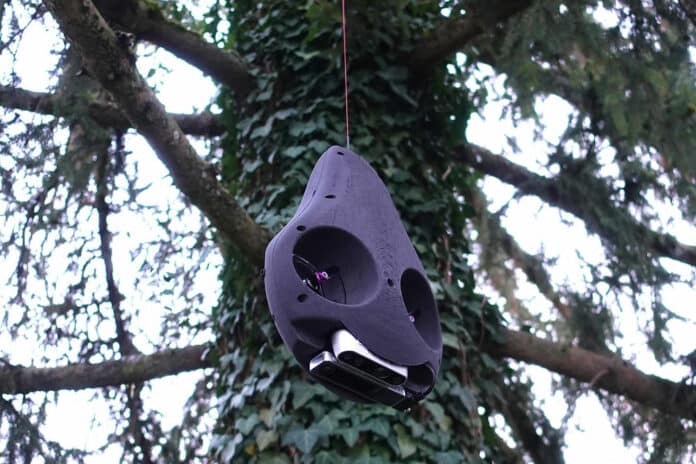Tropical rainforests, which are known to be the most biodiverse habitats in the world, have the highest concentration of living organisms in their dense canopies. However, exploring these habitats is challenging, as climbing trees only allows for selective data collection.
Even existing robots face difficulty in this environment as airborne drones are unsuitable due to the risk of rotor blades getting tangled up in the foliage. Additionally, the varying thicknesses and textures of branches pose a challenge to climbing robots.
To overcome this challenge, Swiss researchers have taken inspiration from arboreal animals that use multiple modes of locomotion. They are developing an environmental monitoring robot called Avocado, which is based on abseiling spiders.
This innovative robot has a robust housing similar in shape to the green fruit and uses a winch and rotors to lower itself through the canopy, collecting data on life in the treetops. The robot also has autonomous navigation technology concealed within it, which will enable it to move through the treetops independently.
The Avocado robot is tethered by a cable to one of the top branches of a tree and is lowered from there into the tree’s crown. Interestingly, the researchers came upon this idea by observing spiders, which also abseil on their silk threads.
In the current test phase, the researchers are still tethering the robot manually by climbing up the tree. Later, a drone could also serve as a kind of mothership, transporting the robot to inaccessible areas and anchoring it in the uppermost branches of the trees.
Once attached to the tree, Avocado can move up and down on its own, thanks to a winch that is tucked away in the upper section of its housing. The robot has two rotors within its “bulge” – the part where the stone of a real avocado would be situated – which it uses to gain momentum and maneuver around branches, foliage, and other obstacles.
“The idea behind this area of research is to get robots out of the factories and use them outdoors for environmental research,” explains Steffen Kirchgeorg, a doctoral student at ETH Zurich and the Swiss Federal Institute for Forest, Snow, and Landscape Research in Birmensdorf.
The research group led by Stefano Mintchev has carried out simulations to see how the robot can move around autonomously through the skillful use of its winch and its rotors. The robot uses an integrated camera to perceive its environment, but the lighting in the treetops poses a challenge as it changes quickly from light to dark. The team is now trying to improve the camera’s ability to perceive depth under such conditions. The robot has already completed an obstacle course indoors and has also been tested in a real tree.
Researchers have already imagined the potential uses of Avocado once it masters autonomous locomotion. For instance, it could be utilized in the rainforest for extended periods of time because it will only consume battery power when it has to move. Additionally, if a solar cell is placed above it, electricity can be transmitted down the cable. The robot operates quietly, so it won’t disturb the forest’s inhabitants.
One more advantage of being tethered by a cable is that the robot can carry a lot of weight and be equipped with many instruments. For example, it can have humidity and temperature sensors to map the microclimate in different sections of the tree canopy, or it can have gripper arms and air filters for collecting DNA samples. Who knows, we may even discover some new animal or plant species because there are probably a large number of undiscovered species still hiding in the canopy of the rainforest.
The project has been funded by the Swiss National Science Foundation. The research team – working jointly with other ETH research groups – has made it to the finals of the “XPRIZE Rainforest” competition, which carries a substantial cash prize.
